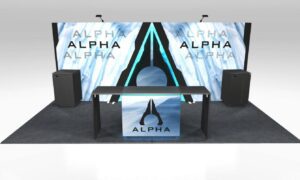Its 3D advancements have led to significant growth in Architecture and Real Estate industries. Traditional sectors have swiftly embraced VR’s potential to innovate and gain an advantage in the global market. Among these industries, real estate stands out as a game-changer. But who is behind the scenes? It is all about 3D developers. They bring virtual worlds to life, creating immersive and lifelike digital environments.
Through specialized software, render farms, such as RebusFarm, and advanced modeling techniques; they can transform 2D plans into accurate 3D representations, effectively conveying architectural designs to clients, investors, and stakeholders. In this article, we’ll explore the numerous benefits of having 3D developers on your team for architects and real estate.
Understanding the Role of 3D Developers
A 3D designer creates and designs three-dimensional models based on client requirements. They use CAD tools, participate in meetings, and perform tasks such as developing new designs and improving existing ones. 3D modeling allows for more detailed information and easier design changes, benefiting coordination with trades and consultants in the construction process.
The evolution of 3D development
The evolution of 3D development has brought significant advancements in the past few decades, since the ’60s until today:
- Commercial CAD systems emerged in the 1960s, marking the first milestone in 3D modeling.
- In the 1990s, the release of 3D computer graphics programs laid the foundation for future developments.
- The introduction of 3D modeling and render farms revolutionized the work of architects and designers.
- Modern industries heavily rely on advanced 3D modeling and rendering programs.
- Recent advancements in computer technology have significantly enhanced 3D art capabilities.
- 3D modeling expands on two-dimensional drafting, allowing for more information and easier design changes.
- Three-dimensional models are widely used in architecture, engineering, and construction (AEC) for buildings and components.
- 3D modeling has become standard practice in earth science and engineering communities.
- In video game development, 3D modeling is integral to the development process.
Utilizing 3D modeling and rendering
In various industries, the utilization of 3D modeling and rendering techniques on render farms has proven to be highly advantageous, particularly in terms of cost and time savings.
A render farm such as RebusFarm is a network of high-performance computers used for rendering complex digital images or animations. Render farms are often used in the film, animation, and architecture industries to render large projects that could be more practical to render on a single computer.
Cost and Time Savings
By harnessing 3D modeling and rendering, designers can streamline the design process using all supported 3D software to you are available in RebusFarm, saving time and costs. With accurate visualizations, potential issues are identified early on, minimizing rework.
Effective communication is enhanced, and realistic presentations captivate clients. Ultimately, this technology accelerates decision-making and improves overall efficiency. You can get the free trial here.
Benefits for Architects
In the field of architecture, 3D developers play a vital role in enhancing the design process and communication between architects and stakeholders. Here are some key benefits of having 3D developers on board:
- Immersive Exploration: 3D developers can create real-time walkthrough experiences that allow architects and clients to explore the design in a dynamic and immersive manner virtually. This interactive experience gives a sense of scale, spatial relationships, and overall ambiance, providing a more realistic understanding of the final built environment.
- Design Validation: Real-time walkthroughs enable architects to test and validate their design concepts in a virtual environment. By navigating through the 3D model, architects can evaluate lighting, ergonomics, and functionality. This iterative process helps refine the design, ensuring it meets the intended goals and user requirements.
- Client Engagement: Real-time walkthroughs empower architects to engage clients more interactively and engagingly. Clients can actively and vigorously participate in the design process, providing feedback and suggestions in real-time. This collaborative approach fosters a stronger client-architect relationship and ensures that the final design aligns with the client’s vision and expectations.
Complex ideas in an accessible manner
3D developers excel in transforming complex architectural concepts and ideas into visually compelling representations. By creating detailed 3D models and renderings, architects can simplify complex spatial relationships and design elements, making them more accessible and understandable to clients, stakeholders, and even the general public:
- Interactive Demonstrations: With the help of 3D developers, architects can create interactive presentations that allow viewers to manipulate and explore the design elements. This interactive approach facilitates a deeper understanding of architectural design, enabling stakeholders to grasp the intricacies and make informed decisions.
- Enhanced Communication: 3D models and visualizations developed by 3D developers serve as powerful communication tools. Architects can effectively convey their design intent, showcasing the project’s features and benefits to clients, investors, and other involved parties. This visual clarity reduces ambiguity, enhances communication, and fosters better collaboration throughout the architectural process.
Benefits for Real Estate
The involvement of 3D developers in the real estate industry has brought significant advantages, revolutionizing the way properties are marketed and experienced. Here are some key benefits of having 3D developers in the real estate sector:
- Immersive Property Showcase: 3D developers can create virtual tours that provide potential buyers with an immersive and interactive experience of the property. Through high-quality 3D models and 360-degree views, buyers can virtually explore the property at their convenience, getting a realistic sense of space, layout, and amenities. This immersive experience enables buyers to make informed decisions and reduces the need for physical visits.
- Remote Access: Virtual tours eliminate geographical barriers, allowing buyers from anywhere in the world to explore properties without being physically present. This is particularly advantageous for international buyers or those relocating to a different city or country. It saves time and resources by narrowing down property options remotely before making travel arrangements for in-person visits.
- Time and Cost Savings: Virtual tours created by 3D developers significantly reduce the time and cost associated with traditional property viewings. Buyers can explore multiple properties within a short period, eliminating the need for scheduling and coordinating individual visits. This efficiency benefits both buyers and sellers, streamlining the property search process.
Allowing buyers to visualize upgrades
3D developers can help buyers visualize potential upgrades or renovations in a property. By creating 3D models and renderings, buyers can see how different design elements, such as new furniture, paint colors, or layout changes, would look in the space.
This enables buyers to envision the property’s potential and make more informed decisions about customization options:
- Decision-Making Support: By allowing buyers to visualize upgrades, 3D developers assist in the decision-making process. Buyers can assess the feasibility and cost implications of desired upgrades before committing to a purchase. This level of clarity reduces uncertainty and minimizes the risk of buyer’s remorse, ultimately leading to more satisfied and confident buyers.
- Enhanced Marketing: Properties that can visualize upgrades through 3D models and renderings have a competitive edge in the modern real estate market. Sellers can effectively showcase the property’s potential and attract a wider range of potential buyers. The ability to visualize upgrades adds value to the property and enhances its marketability.
Conclusion
3D developers have emerged as game-changer for architects and the real estate industry. With their expertise in creating realistic 3D models, architects can visualize designs, enhance communication, and streamline the design process.
Similarly, in real estate, 3D developers enable virtual tours, allowing buyers to explore properties remotely and visualize upgrades. The utilization of 3D developers has revolutionized the way architects and real estate professionals work. It has led to improved outcomes, cost savings, and enhanced client experiences.




































